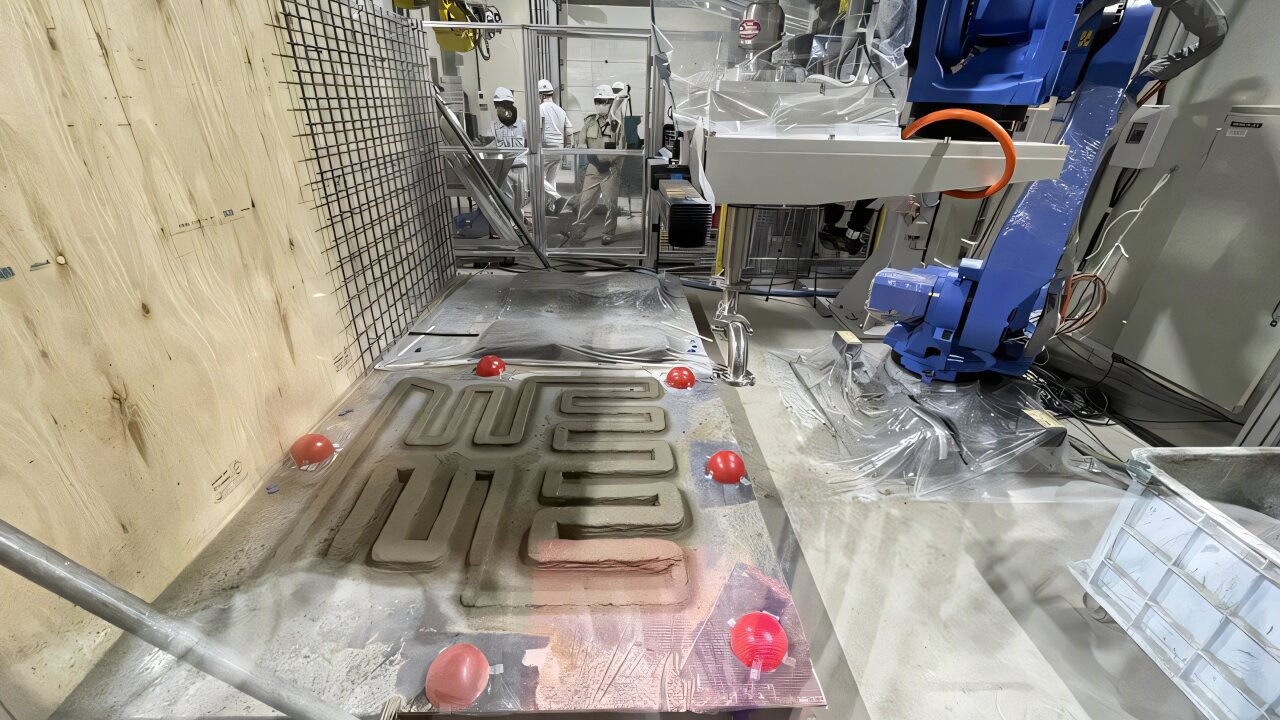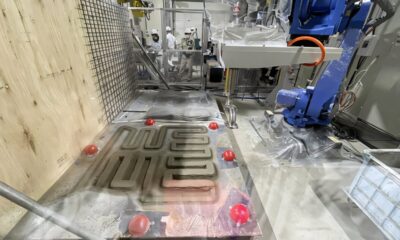Tech
How a SIM farm like the one found near the UN threatens telecom networks

The U.S. Secret Service has found and is quietly dismantling a massive network of “SIM farms” across the New York area just as world leaders gather for meetings at the United Nations.
Matt McCool, the special agent in charge of the Secret Service’s New York field office, said agents found multiple sites filled with servers and stacked SIM cards, of which more than 100,000 cards were already active. Though the investigation is ongoing and no arrests have been made, he described it as a well-funded, highly organized enterprise and possibly run by nation-state actors—perpetrators from particular countries.
Officials also warned of the havoc the network could have caused if left intact. McCool compared the potential impact to the cellular blackouts that followed the Sept. 11 attacks and the Boston Marathon bombing, when networks collapsed under strain.
So what are these SIM farms and what are they capable of?
What the tech does
SIM farms are hardware devices that can hold numerous SIM cards from different mobile operators. These devices then exploit voice over internet protocol (VoIP) technology to send and receive bulk messages or calls.
While initially developed for legitimate purposes, such as low cost international calling, the technology has become a cornerstone of organized fraud targeting mass audiences—phishing texts and scam calls.

“Scams have become so sophisticated now. Phishing emails, texts, spoofing caller ID, all of this technology gives scammers that edge,” said Eva Velasquez, president and CEO of the Identity Theft Resource Center.
In this case, the devices were concentrated within 35 miles of the U.N. building. The investigation is ongoing, but McCool said forensic analysis currently believe the system could have been used to send encrypted messages to organized crime groups, cartels and terrorist organizations.
How these farms pose a threat to telecom networks
Anthony J. Ferrante, the global head of the cybersecurity practice at FTI, an international consulting firm, said the photos show a very sophisticated and established SIM farm that could be used for any number of nefarious activities, including the potential to overwhelm cellular networks with millions of calls in just a few minutes.
-

This photo provided by the U.S. Secret Service, in New York, Monday, Sept. 22, 2025, shows SIM card packaging that was seized by the agency. Credit: U.S. Secret Service via AP
-

This photo provided by the U.S. Secret Service, in New York, Monday, Sept. 22, 2025, shows part of a wall of SIM boxes that were seized by the agency. Credit: U.S. Secret Service via AP
-

This photo provided by the U.S. Secret Service, in New York, Monday, Sept. 22, 2025, shows servers on desks at the location where they were seized by the agency. Credit: U.S. Secret Service via AP
“So if you can imagine that type of magnitude on cellular networks, it would just overwhelm them and cause them to shut down,” Ferrante said in an interview. He also notes that it’s possible the system could be used for surveillance operations, given its proximity to the United Nations, “potentially that equipment could be used to either intercept communications, eavesdrop on communications, or actually, clone devices, as well.”
Ferrante, who previously served in key security positions at the White House and the FBI, says he’s awaiting the results of the investigation before drawing any conclusions about the nature of the setup, but he emphasizes that the scale of the operation shows how simple tools can pose real risks to critical infrastructure.
“The masterminds could have set this up a long time ago and be operating from thousands of miles away,” he said. “It’s a stark reminder of how deeply interconnected our world has become, where local vulnerabilities can be exploited globally.”
© 2025 The Associated Press. All rights reserved. This material may not be published, broadcast, rewritten or redistributed without permission.
Citation:
How a SIM farm like the one found near the UN threatens telecom networks (2025, September 23)
retrieved 23 September 2025
from https://techxplore.com/news/2025-09-sim-farm-threatens-telecom-networks.html
This document is subject to copyright. Apart from any fair dealing for the purpose of private study or research, no
part may be reproduced without the written permission. The content is provided for information purposes only.
Tech
Spray 3D concrete printing simulator boosts strength and design

Concrete 3D printing reduces both time and cost by eliminating traditional formwork, the temporary mold for casting. Yet most of today’s systems rely on extrusion-based methods, which deposit material very close to a nozzle layer by layer. This makes it impossible to print around reinforcement bars (rebars) without risk of collision, limiting both design flexibility and structural integrity of builds.
Kenji Shimada and researchers in his Carnegie Mellon University’s Computational Engineering and Robotics Laboratory (CERLAB), are breaking through that limitation with a new simulation tool for spray-based concrete 3D printing.
“Spray-based concrete 3D printing is a new process with complicated physical phenomena,” said Shimada, a professor of mechanical engineering. “In this method, a modified shotcrete mixture is sprayed from a nozzle to build up on a surface, even around rebar.”
The ability to print freely around reinforcement is especially important in places like Japan and California, where earthquakes are an imminent threat and structural strength is critical.
“To make this technology viable, we must be able to predict exactly how the concrete will spray and dry into the final shape,” Shimada explained. “That’s why we developed a simulator for concrete spray 3D printing.”
The new simulator can model the viscoelastic behaviors of shotcrete mixtures, including drip, particle rebound, spread, and solidification time. This way, contractors can assess multiple printing paths based on a CAD design with the simulator to evaluate whether spray 3D printing is a feasible fabrication technique for their structure.
The team traveled to Tokyo, Japan, where Shimizu Corporation already operates spray 3D printing robots to validate their model. In the first test, the team focused on the simulator’s ability to predict shape based on the speed of the nozzle’s movement. With 90.75% accuracy, the simulator could predict the height of the sprayed concrete. The second test showed that the simulator could predict printing over rebar with 92.3% and 97.9% accuracy for width and thickness, respectively.
According to Soji Yamakawa, a research scientist in Shimada’s lab and the lead author of the team’s research paper published in IEEE Robotics and Automation Letters, a simulation of this kind would typically take hours, if not days, to run.
“By making wild assumptions, we were able to successfully simplify a super complex physics simulation into a combination of efficient algorithms and data structures and still achieved highly realistic output,” Yamakawa said.
Future work will aim to increase accuracy by identifying environmental parameters like humidity, optimizing performance, and adding plastering simulation to create smoother finished products.
“There are still so many applications and technologies that we can develop with robotics,” said Kyshalee Vazquez-Santiago, a co-author of the paper and a mechanical engineering Ph.D. candidate leading the Mobile Manipulators research group within CERLAB.
“Even in concrete 3D printing, we are working with an entirely new type of application and approach that has so many advantages but leaves so much room for further development.”
More information:
Soji Yamakawa et al, Concrete Spray 3D Printing Simulator for Nozzle Trajectory Planning, IEEE Robotics and Automation Letters (2025). DOI: 10.1109/lra.2025.3615038
Citation:
Spray 3D concrete printing simulator boosts strength and design (2025, November 11)
retrieved 11 November 2025
from https://techxplore.com/news/2025-11-spray-3d-concrete-simulator-boosts.html
This document is subject to copyright. Apart from any fair dealing for the purpose of private study or research, no
part may be reproduced without the written permission. The content is provided for information purposes only.
Tech
Mind readers: How large language models encode theory-of-mind

Imagine you’re watching a movie, in which a character puts a chocolate bar in a box, closes the box and leaves the room. Another person, also in the room, moves the bar from a box to a desk drawer. You, as an observer, know that the treat is now in the drawer, and you also know that when the first person returns, they will look for the treat in the box because they don’t know it has been moved.
You know that because as a human, you have the cognitive capacity to infer and reason about the minds of other people—in this case, the person’s lack of awareness regarding where the chocolate is. In scientific terms, this ability is described as Theory of Mind (ToM). This “mind-reading” ability allows us to predict and explain the behavior of others by considering their mental states.
We develop this capacity at about the age of four, and our brains are really good at it.
“For a human brain, it’s a very easy task,” says Zhaozhuo Xu, Assistant Professor of Computer Science at the School of Engineering—it barely takes seconds to process.
“And while doing so, our brains involve only a small subset of neurons, so it’s very energy efficient,” explains Denghui Zhang, Assistant Professor in Information Systems and Analytics at the School of Business.
How LLMs differ from human reasoning
Large language models or LLMs, which the researchers study, work differently. Although they were inspired by some concepts from neuroscience and cognitive science, they aren’t exact mimics of the human brain. LLMs were built on artificial neural networks that loosely resemble the organization of biological neurons, but the models learn from patterns in massive amounts of text and operate using mathematical functions.
That gives LLMs a definitive advantage over humans in processing loads of information rapidly. But when it comes to efficiency, particularly with simple things, LLMs lose to humans. Regardless of the complexity of the task, they must activate most of their neural network to produce the answer. So whether you’re asking an LLM to tell you what time it is or summarize “Moby Dick,” a whale of a novel, the LLM will engage its entire network, which is resource-consuming and inefficient.
“When we, humans, evaluate a new task, we activate a very small part of our brain, but LLMs must activate pretty much all of their network to figure out something new even if it’s fairly basic,” says Zhang. “LLMs must do all the computations and then select the one thing you need. So you do a lot of redundant computations, because you compute a lot of things you don’t need. It’s very inefficient.”
New research into LLMs’ social reasoning
Working together, Zhang and Xu formed a multidisciplinary collaboration to better understand how LLMs operate and how their efficiency in social reasoning can be improved.
They found that LLMs use a small, specialized set of internal connections to handle social reasoning. They also found that LLMs’ social reasoning abilities depend strongly on how the model represents word positions, especially through a method called rotary positional encoding (RoPE). These special connections influence how the model pays attention to different words and ideas, effectively guiding where its “focus” goes during reasoning about people’s thoughts.
“In simple terms, our results suggest that LLMs use built-in patterns for tracking positions and relationships between words to form internal “beliefs” and make social inferences,” Zhang says. The two collaborators outlined their findings in the study titled “How large language models encode theory-of-mind: a study on sparse parameter patterns,” published in npj Artificial Intelligence.
Looking ahead to more efficient AI
Now that researchers better understand how LLMs form their “beliefs,” they think it may be possible to make the models more efficient.
“We all know that AI is energy-expensive, so if we want to make it scalable, we have to change how it operates,” says Xu. “Our human brain is very energy efficient, so we hope this research brings us back to thinking about how we can make LLMs to work more like the human brain, so that they activate only a subset of parameters in charge of a specific task. That’s an important argument we want to convey.”
More information:
Yuheng Wu et al, How large language models encode theory-of-mind: a study on sparse parameter patterns, npj Artificial Intelligence (2025). DOI: 10.1038/s44387-025-00031-9
Citation:
Mind readers: How large language models encode theory-of-mind (2025, November 11)
retrieved 11 November 2025
from https://techxplore.com/news/2025-11-mind-readers-large-language-encode.html
This document is subject to copyright. Apart from any fair dealing for the purpose of private study or research, no
part may be reproduced without the written permission. The content is provided for information purposes only.
Tech
‘The Running Man’ Conjures a Dystopian Vision of America That’s Still Not as Bad as Reality

Thirty-eight years later, The Running Man is back on our screens, playing to a world that seems to have caught up with the original’s idiocy. This new one features a considerably less bulky, but no less watchable star in Glen Powell, playing runner Ben Richards. Fired from various jobs for insubordination, and tending to a sick toddler, he’s press-ganged into joining America’s favorite kill-or-be-killed game show, after a producer identifies him as “quantifiably the angriest man to ever audition.”
The show’s premise has been tweaked a bit, too. Instead of navigating a series of video-game-like levels for the length of a TV broadcast, Richards must now survive in the real world for 30 days, surveilled by hovering network TV camera droids, pursued by armed-to-the-teeth “hunters,” private police goons, and a general public who spot and film runners using a proprietary app on their smartphones. The longer he lasts, and the more pursuers he can kill, the more money he makes. He’s cheered (and booed) by a massive audience of brain-dead oafs called Running Fans, glued to their screens 24/7. Like Schwarzenegger’s Richard before him, Powell makes the transition from onscreen villain to beloved folk hero, mugging for the cameras as his antics drive the ratings.
If it sounds familiar, it’s because this new version of The Running Man, which is cowritten and directed by Edgar Wright (Hot Fuzz, Scott Pilgrim vs. the World), draws as much from the original film and Stephen King’s source novel as it does from present-day reality. A modern-day America overseen by a game show president, where ICE squads team up with Dr. Phil McGraw to turn deportation raids into reality television, would seem ripe for a Running Man remake. But that’s the problem. Satire relies on caricature. And the new version is barely exaggerative. Does the very idea of a lethal game show seem that far off, in a world where the success of Netflix’s South Korean thriller series Squid Game (itself a variation on the The Running Man format) spawned an actual, licensed Squid Game-style competitive reality TV show? Or when a grinning zillennial YouTuber named “MrBeast” baits contestants with ten grand to sit in a bathtub full of snakes? A few weeks ago I watched live as rookie New York Giants’ running back Cam Skattebo’s ankle twisted 45-degrees, as if cranked by some invisible wrench, while a bar-full of rival fans cheered.
-

 Tech1 week ago
Tech1 week agoCISOs in court: Balancing cyber resilience and legal accountability | Computer Weekly
-

 Fashion1 week ago
Fashion1 week agoCoach reconnects with Bank & Vogue for upcycled bags using corduroy
-

 Sports1 week ago
Sports1 week agoBears’ Colston Loveland bounces off 2 defenders to score clutch TD for win over Bengals
-

 Fashion1 week ago
Fashion1 week agoGermany’s Adidas achieves highest-ever quarterly sales in Q3 2025
-

 Business1 week ago
Business1 week agoFirst new Amazon electric heavy goods vehicles hit UK roads
-

 Sports1 week ago
Sports1 week agoNFL broadcaster Cris Collinsworth makes government shutdown joke as Seahawks clobber Commanders
-

 Entertainment1 week ago
Entertainment1 week agoPSX rises on IMF tranche hopes, earnings momentum
-

 Business1 week ago
Business1 week agoBP accelerates overhaul with higher asset sale target as profits beat forecasts
















